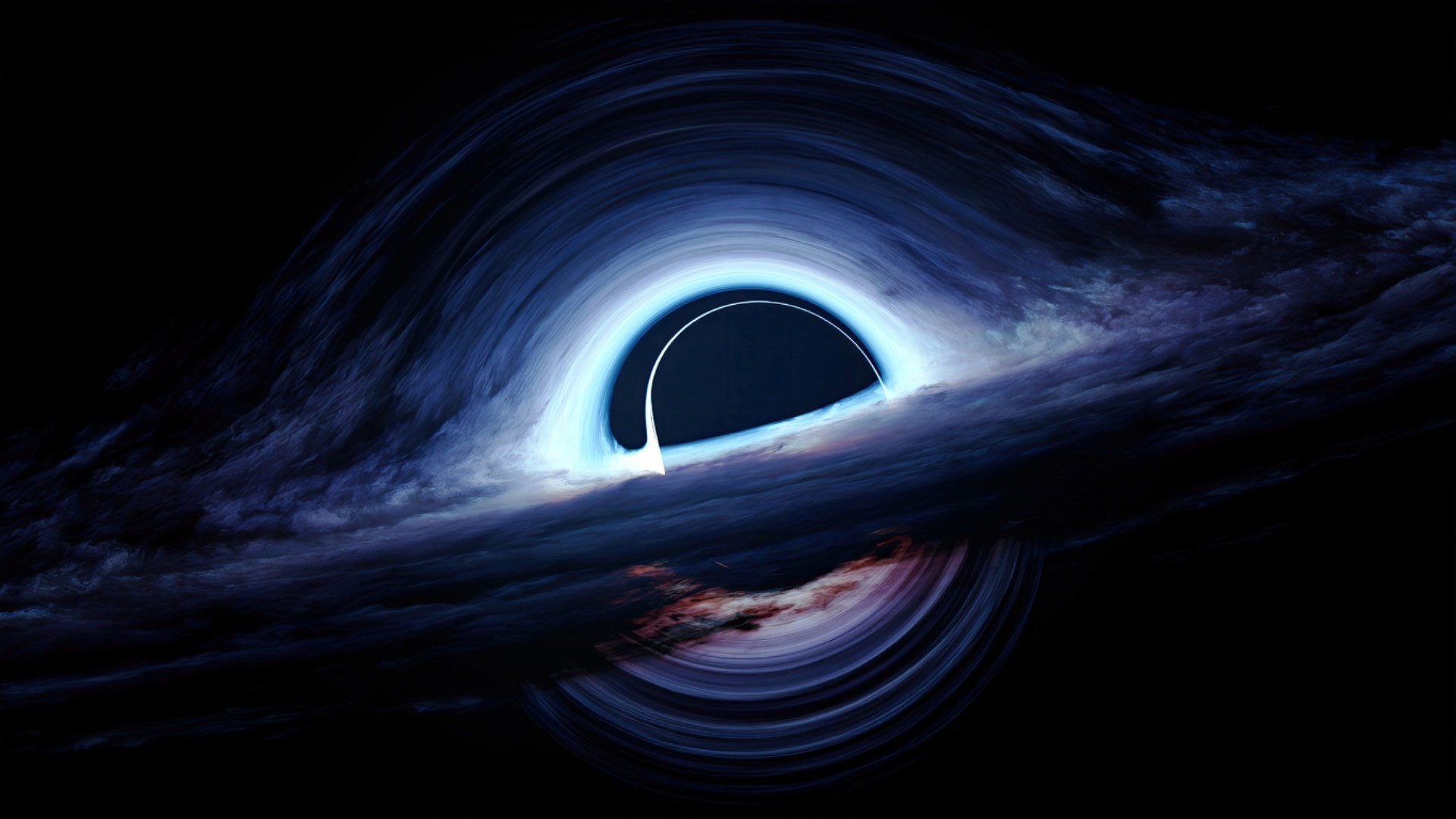Black holes are spherical regions of such extreme gravity that not even light can escape. First discovered a century ago as shocking solutions to the equations of Albert Einstein’s general theory of relativity, they’ve since been detected throughout the universe.
The size of black holes varies greatly, and scientists believe that the size of the smallest of them may not exceed the size of an atom, although its mass may be equivalent to the mass of a high mountain. And there are stellar-mass black holes, which may be more than 20 times the mass of the Sun. A single galaxy, like our Milky Way, may contain many stellar-mass black holes.
Susskind and superstrings
Given the ability of black holes to devour everything that dares to approach them, is it possible for black holes to expand and swell to engulf the entire universe?
In 2018, a solution to this perplexing black hole mystery was offered by physicist Leonard Susskind, professor of theoretical physics at Stanford University, best known for his pioneering research in superstring theory.
Suskind based his explanation on superstring theory, which posits that everything in the universe, every particle and every matter, is made up of one-dimensional strings. The pattern of vibration of these strings is determined by the mass of the material, its charge, and some other properties.
According to this theory, elementary particles are merely reflections of the vibrations of these one-dimensional strings.
Susskind suggested that black holes are expanding inward rather than outward. This feature is not seen by looking at it from a distance. When viewed from the outside, these mysterious invisible balls seem to have a constant size, while they swell and grow from the inside to infinity. How is that possible?
General theory of relativity
The general theory of relativity, developed by Albert Einstein, predicted the existence of black holes more than a century ago. It assumed that any mass compressed enough to distort space and time to form a black hole.
Einstein developed the general theory of relativity to explain the gravity that we see between masses, as being caused by a curvature in the fabric of four-dimensional space-time, caused by the presence of huge bodies. This curvature controls the movement of objects in space.
But the gravity in black holes is so close to their centers that Einstein’s equations can’t explain it. While the size of the black hole may appear constant from the outside, it enlarges and grows from the inside as new objects fall into it.
A common analogy is to imagine the dimensions of space plus time as a smooth rubber sheet. Much as a heavy object dimples the rubber sheet, mass distorts the geometry of spacetime.
The properties of our Universe’s rubber sheet means it can form a deep gravity funnel that stretches ‘down’ without stretching much further ‘out’.
Most objects expand ‘out’ as you add material, not ‘in’. So how do we even begin to picture this? Rubber sheets are useful analogies, but only up to a certain point.
To understand how matter behaves against this super stretchy backdrop, we need to look elsewhere. Luckily, physics has a second rule book on how the Universe works called quantum mechanics, which describes how particles and their forces interact.
The two rule books of general relativity and quantum mechanics don’t always agree, though. Small things interpreted through the lens of general relativity don’t make much sense. And big things like black holes produce gibberish when the rules of quantum mechanics are applied.
This means we’re missing something important – something that would allow us to interpret general relativity’s space-bending feature in terms of finite masses and force-mediating particles.
One contender is something called anti-de Sitter/conformal field theory correspondence, shortened to Ads/CFT. This is a ‘string theory meets four-dimensional space’ kind of idea, aiming to bring the best of both quantum mechanics and general relativity together.
Based on its framework, the quantum complexity of a black hole – the number of steps required to return it to a pre-black hole state – is reflected in its volume.
The same thinking is what lies behind another brain-breaking idea called the holographic principle. The exact details aren’t for the faint-hearted, but remain freely available on arXiv if you want to get your mathematics fix for the day.
It might sound a bit like downloading movies onto your desktop only to find it’s now ‘bigger’ on the inside. As ludicrous as it sounds, in the extreme environment of a black hole more computational power might indeed mean more internal volume. At least this is what Susskind’s Ads/CFT modelling suggests.
String theory itself is one of those nice ideas begging for an empirical win, so we’re still a long way from marrying quantum mechanics and general relativity.
Susskind’s suggestion that quantum complexity is ultimately responsible for the volume of a black hole has physicists thinking through the repercussions. After all, black holes aren’t like ordinary space, so we can’t expect ordinary rules to apply.
“I think it’s a very, very interesting question whether the cosmological growth of space is connected to the growth of some kind of complexity,” Susskind was quoted in The Atlantic.
“And whether the cosmic clock, the evolution of the Universe, is connected with the evolution of complexity. There, I don’t know the answer.”
Sources:
https://www.theatlantic.com/science/archive/2018/12/black-holes-complexity/577648/
https://en.wikipedia.org/wiki/AdS/CFT_correspondence
https://arxiv.org/abs/1810.11563

